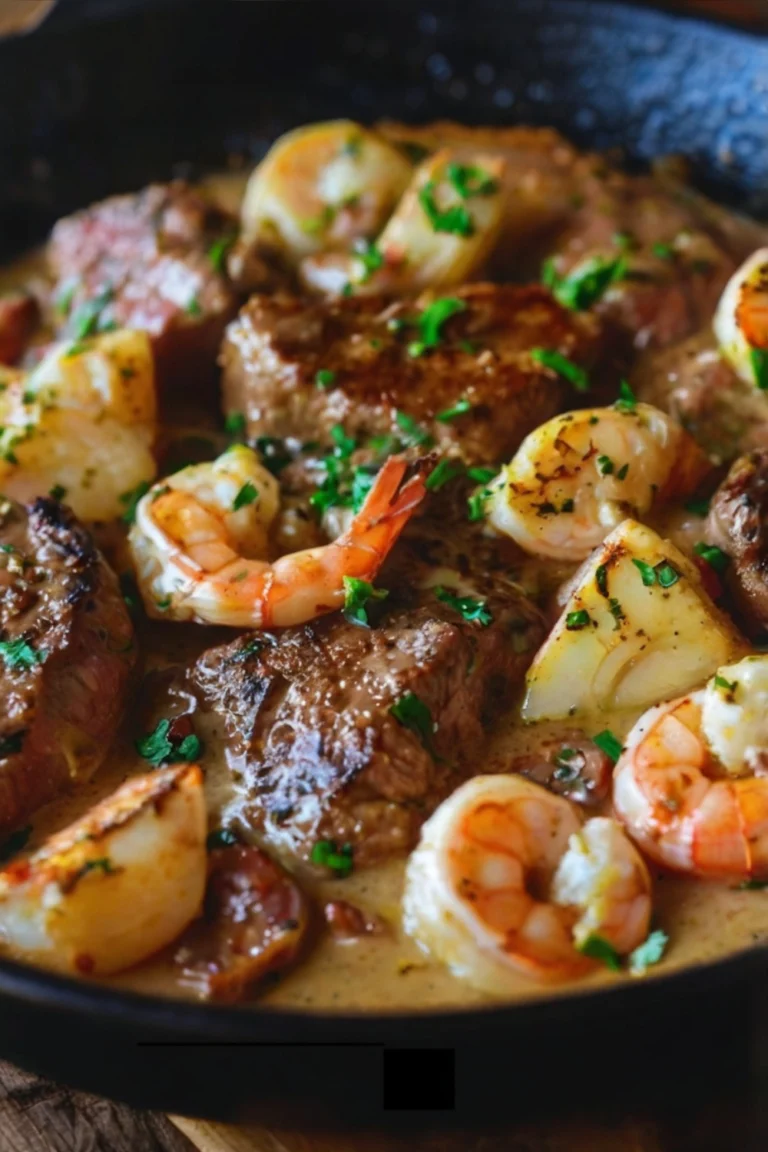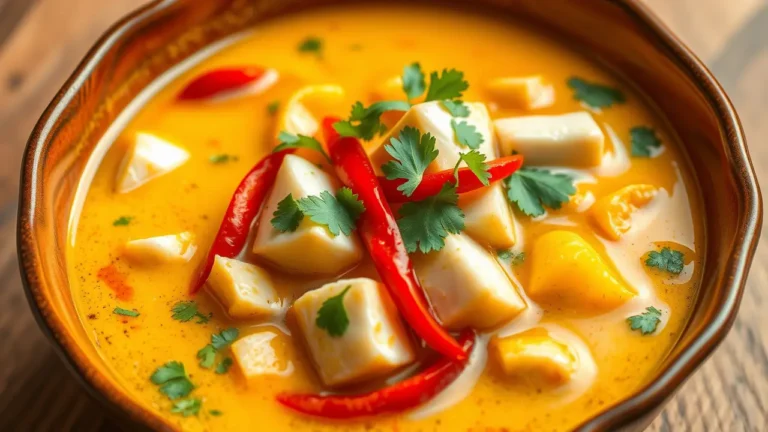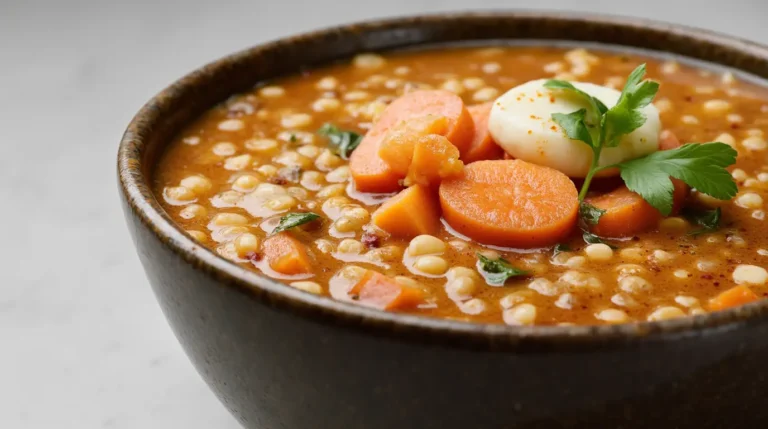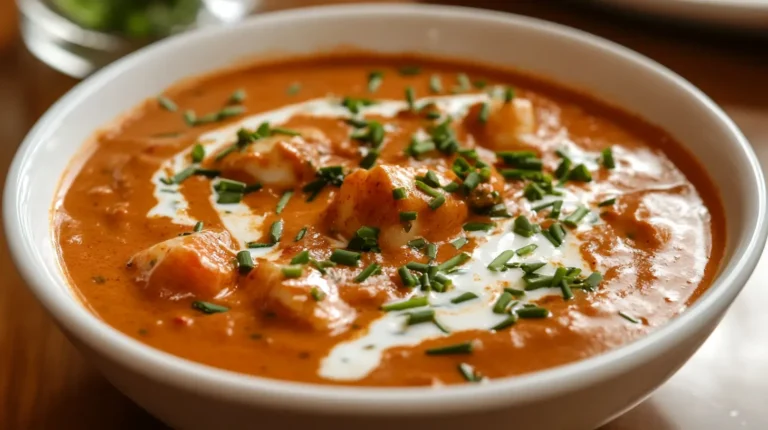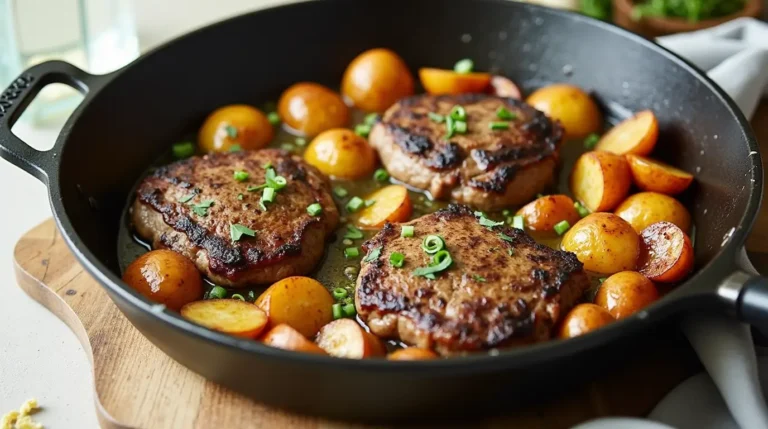French Ratatouille: 7 Expert Tips To Get It Right Every Time
French cuisine is often associated with refinement and complex cooking techniques, but some of its most iconic dishes have humble origins. One such dish is ratatouille, a rustic vegetable stew from the sun-soaked region of Provence. Bursting with the flavors of eggplant, zucchini, peppers, onions, tomatoes, garlic, and herbs, it’s a celebration of summer’s bounty and the Mediterranean way of life. In this article, we’ll explore the origins of ratatouille, break down its essential ingredients, guide you through a traditional recipe, and share serving ideas and tips to help you master this classic.
Table of Contents
What is Traditional French Ratatouille?
Ratatouille is a vegetable medley, simmered slowly until the flavors meld into a fragrant and hearty dish. Unlike modern interpretations that emphasize artistic presentation—like the thinly sliced, layered version made famous in Pixar’s Ratatouille—the traditional Provençal style is rustic and homey. The focus is on coaxing natural sweetness from each vegetable through gentle cooking in olive oil, seasoned with thyme, bay leaf, and basil.
Authenticity comes from using fresh, seasonal produce and respecting the balance of flavors rather than overcomplicating the recipe. This makes ratatouille both timeless and adaptable.
A Brief History of Ratatouille
The name ratatouille derives from the French verb touiller, meaning “to stir.” Originally, it referred to a simple stew of cooked vegetables, often prepared by farmers and workers in Provence.
Its origins date back to the 18th century in the city of Nice, where local cooks used abundant summer vegetables to make a filling yet inexpensive dish. With olive oil widely available in the Mediterranean, ratatouille became a staple of Provençal kitchens. Over the centuries, it evolved from humble peasant fare into a dish served in fine restaurants, but its essence—fresh vegetables cooked with patience—remains unchanged.
Ingredients in Traditional French Ratatouille
The beauty of ratatouille lies in its simplicity and reliance on peak-season vegetables. Here’s what you’ll need for an authentic version:
Ingredients (Serves 4–6)
- 2 medium eggplants (about 500 g / 1 lb), diced
- 2 medium zucchinis (about 300 g / 10 oz), sliced into half-moons
- 2 red bell peppers, chopped
- 1 yellow bell pepper, chopped
- 1 large onion, diced
- 4 cloves garlic, minced
- 6 ripe tomatoes (about 600 g / 1.3 lbs), peeled and chopped (or 1 can whole peeled tomatoes, 400 g / 14 oz)
- 5 tbsp olive oil
- 1 tsp dried thyme (or 2 sprigs fresh thyme)
- 1 bay leaf
- Handful of fresh basil leaves, torn
- Salt and pepper, to taste
Optional: a pinch of sugar to balance acidity, or fresh rosemary for a stronger herbal aroma.
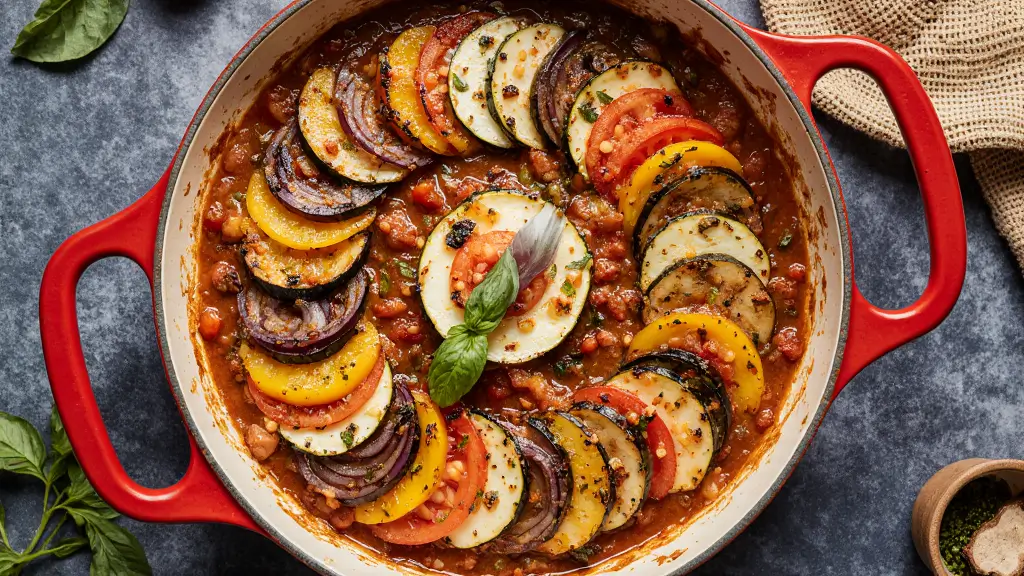
Methods of Cooking French Ratatouille
There are several ways to prepare ratatouille, each producing slightly different results:
- Traditional stovetop simmer – Vegetables are sautéed and then simmered together until tender. This is the most classic approach.
- Layered oven-baked (confit byaldi) – Thinly sliced vegetables are arranged in overlapping layers and baked over a tomato base. This elegant version gained global fame thanks to Pixar.
- Separate sauté method – Each vegetable is sautéed individually before being combined. This prevents sogginess and ensures every ingredient retains its unique flavor.
Whichever method you choose, the principle remains the same: let the vegetables cook slowly so their flavors deepen and harmonize.
Step-by-Step Recipe for Traditional French Ratatouille
Preparation
- Prep the vegetables – Dice eggplants and zucchinis into even pieces. Chop peppers and onions. Peel and chop tomatoes (or use canned).
- Salt the eggplant – Sprinkle diced eggplant with salt and let sit for 20 minutes. Rinse and pat dry to remove bitterness.
Cooking
- Heat 2 tbsp olive oil in a large skillet. Add the eggplant, cook until lightly browned, then remove.
- Add 1 tbsp olive oil and sauté zucchini until golden. Remove and set aside.
- In the same pan, cook onions and peppers until softened. Stir in garlic and cook for 1–2 minutes.
- Add tomatoes, thyme, bay leaf, salt, and pepper. Simmer for 10 minutes.
- Return eggplant and zucchini to the pan. Stir gently, cover, and let simmer over low heat for 20–30 minutes until all vegetables are tender but not mushy.
- Just before serving, remove the bay leaf, stir in fresh basil, and drizzle with olive oil.
Serving
Ratatouille can be served hot, at room temperature, or chilled. Like many stews, it tastes even better the next day.
Tips for the Perfect French Ratatouille
- Cook in batches – Sautéing vegetables separately avoids steaming and keeps textures intact.
- Use ripe tomatoes – Fresh summer tomatoes bring natural sweetness and depth.
- Don’t rush – Low, slow cooking allows flavors to blend beautifully.
- Make ahead – Ratatouille develops richer flavor when left overnight.
Serving Suggestions
Ratatouille is versatile and pairs well with many dishes:
- As a main course with crusty bread, rice, or couscous.
- As a side dish with roast chicken, grilled lamb, or fish.
- With pasta or polenta for a heartier vegetarian option.
- Enjoyed cold as part of a picnic spread.
Nutritional Value and Health Benefits
Beyond its delicious taste, ratatouille is also exceptionally healthy:
- Low-calorie (around 150 calories per serving).
- Rich in fiber, aiding digestion.
- Packed with antioxidants, such as lycopene from tomatoes and beta-carotene from peppers.
- Naturally vegan and gluten-free, fitting many diets.
As part of the Mediterranean diet, it supports heart health and overall well-being.
Variations of French Ratatouille
- Tian – A baked version with layered vegetables and breadcrumbs or cheese.
- Confit byaldi – An elegant presentation of thinly sliced vegetables in tomato sauce.
- Ratatouille pasta – Tossed with spaghetti or penne for a quick meal.
- Ratatouille tart – Spread over puff pastry and baked for a rustic appetizer.
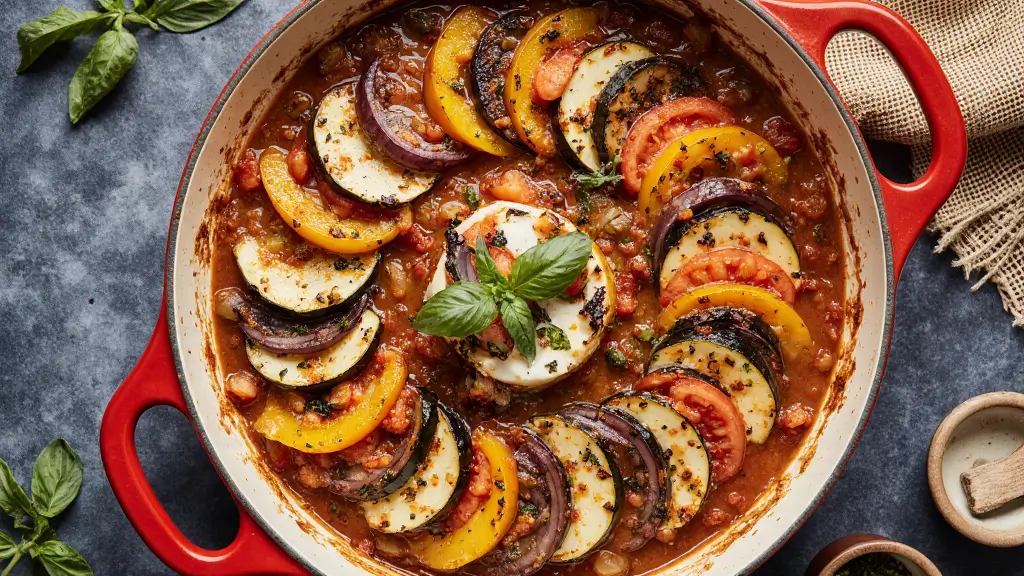
FAQs About French Ratatouille
What makes ratatouille traditional?
Cooking simple summer vegetables with olive oil and Provençal herbs without unnecessary additions keeps it authentic.
Is ratatouille served hot or cold?
It can be enjoyed warm as a side or cold as a salad-like dish.
What’s the difference between ratatouille and caponata?
Caponata is Sicilian, featuring vinegar, capers, and raisins for a sweet-sour flavor. Ratatouille is savory and herb-forward.
Can ratatouille be frozen?
Yes—store in airtight containers for up to 3 months. Thaw and reheat gently.
What meat goes well with ratatouille?
It pairs beautifully with roast chicken, lamb chops, or grilled fish.
Is ratatouille healthy for weight loss?
Yes, it’s low in calories, filling, and nutrient-rich.
How do you pronounce “ratatouille”?
It’s pronounced rah-tah-TOO-ee.
Conclusion
Traditional French ratatouille is more than a vegetable stew—it’s a dish that captures the essence of Provence: sun-ripened produce, fragrant herbs, and the comfort of home cooking. Whether served as a simple family meal or presented elegantly at a dinner party, ratatouille embodies the timeless charm of French cuisine. Try it once, and it might just become a staple in your kitchen too.
If you enjoy creative baked dishes, you may also like this Baked Egg Challenge Recipe for a high-protein breakfast alternative.

